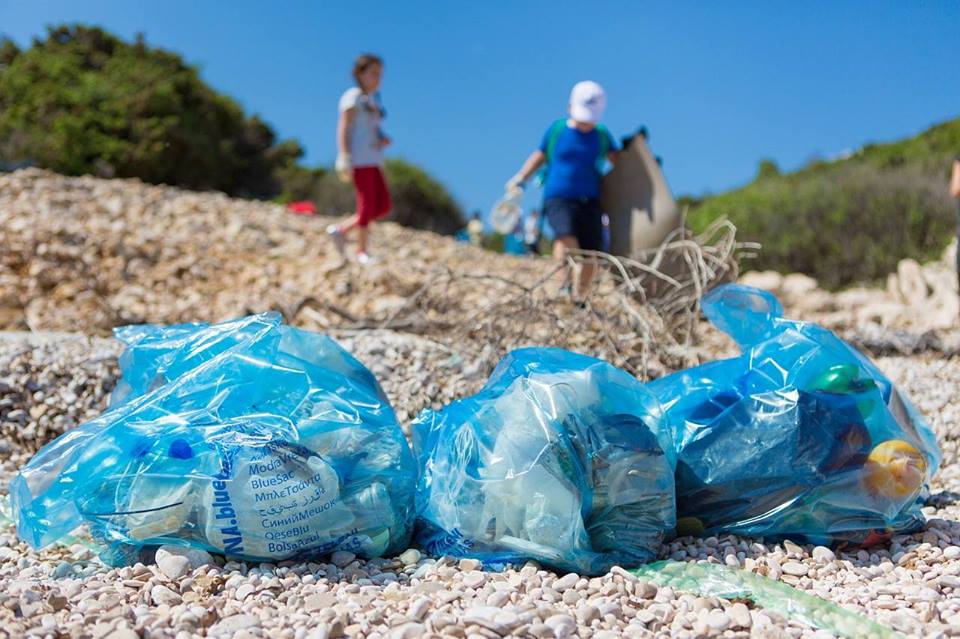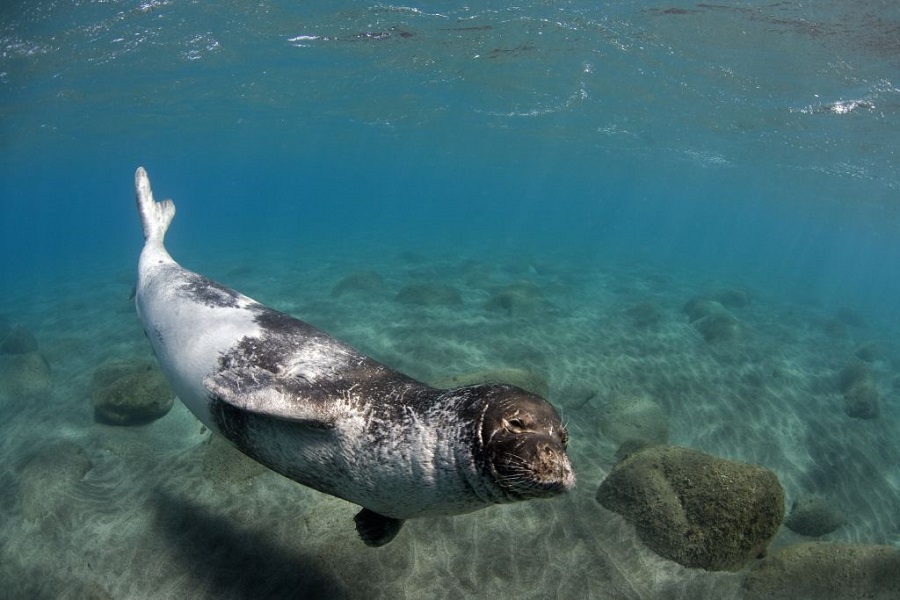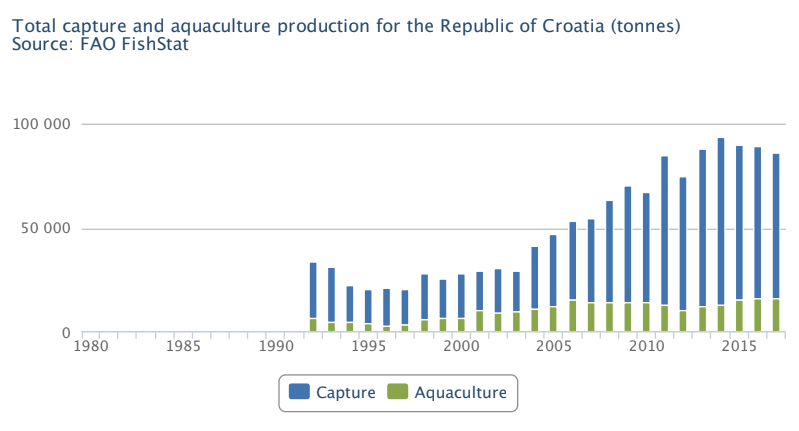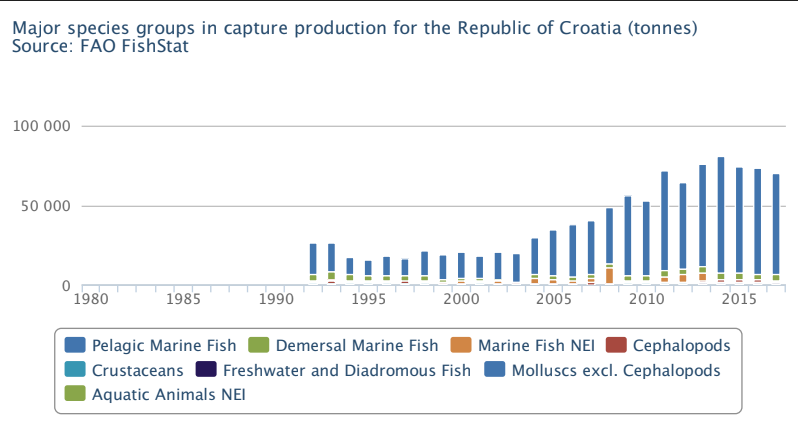October 30, 2019 - Mass tourism is just one aspect of human life which affects the environment. A look at the health of Croatia's most important natural jewel, the Adriatic, through the eyes of an expert, Dr. Ana Bratos Cetinic.
While Croatia's tourism officials are busy talking numbers, numbers, numbers, there is an aspect of tourism which is quietly omitted from the discussion - the environmental cost. More tourists bring more pressure on the infrastructure, and when the infrastructure is not upgraded to meet the rising demand, there are obviously consequences.
But mass tourism is not the only pressure on the health of the Adriatic Sea - overfishing, plastic, global warming are all bringing their own threats. I am immensely grateful for Dr. Ana Bratos Cetinic from the Department of Aquaculture the University of Dubrovnik for kindly agreeing to my request for a wide-ranging interview on the current state of Adriatic and the ongoing threats to its equilibrium. It is a fascinating read with lots of things to focus on for those wanting to make the environment and Croatia tourism better and more sustainable.
1. It is no secret that the state of our oceans are not as good as they once were. As a marine biologist, can you give your opinions of how things have changed in the last 10-15 years on each of the following in Croatia's Adriatic Sea: fish stocks, sea temperature, plastic, and sewage.
Fish stocks
It is true that everything in this world is changing, and so are the oceans, which actually make up 71% of the Earth's surface. The oceans are not just a huge amount of water, or an endless reservoir of resources, and not even a bottomless hole that can receive anything we throw away. In addition to providing diverse habitats to millions of species, oceans affect terrestrial habitats, the biosphere and atmosphere, and they regulate weather patterns and climate. Since the oceans contain 99% percent of the world's living space, it's not surprising that tiny phytoplankton which live in the water column contribute 50 to 85 percent of the oxygen in Earth’s atmosphere.
The oceans also absorb carbon dioxide from the atmosphere; as atmospheric levels increase, oceans increase the amount of carbon dioxide they absorb making water more acidic. It may dissolve the calcium carbonate which is very important for marine organisms – not only for those with shells and skeletons which are made of it; the lack of the calcium carbonate can interrupt processes like breathing. The marine environment is actually associated with communities of organisms which live in the oceans and they all together form the ecosystem. A healthy ecosystem is pretty resistant to stress and disturbances caused by anthropogenic or non-anthropogenic pressures. Fish populations in the oceans are part of the marine ecosystem and they are not just fish stocks; they include specimens of all ages (sizes) which are necessary to maintain the population , not just their own- they have a number of roles in the marine community.
When we talk about changes in fish stocks, it’s common to speak in terms of the fish market. Sometimes the amount of sold fish is not decreasing, but it should be considered what kind of fish one talks about and does certain population changes. There is no doubt that in the last couple of decades in all oceans, fishermen have been catching smaller and smaller specimens shifting the reproduction period to undersized specimens. Since in some species specimens develop male or female sex only when they reach a certain size, devastating effects on fish stock and marine ecosystem are obvious. Aditionally, you don’t have to be a marine scientist or fisherman to notice that some, once abundant populations are almost depleted. On the other hand, owing to water temperature increases, some species from the warmer environments are moving northwards. Owing to the geographical position and marine currents, the Adriatic, the small and semi-enclosed sea is especially vulnerable to such impacts that could disturb the ecological equilibrium.
Sea temperature
The temperature of the surface layer of the Adriatic is rising, especially in the summer period, but a more serious problem is that deeper layers of seawater are becoming warmer. This results with changes in the distribution of fish or other animals that can change the habitat, or mass mortalities of those organisms which live attached to the substrate and are sensitive to the temperature changes, such as sponges or corals. The temperature is a key factor which affects reproduction of marine organisms, so the change of water temperature results with breeding or development disorders. A lot of organisms move northwards, looking for a suitable living area. Together with ships ballast water or aquaculture, that is the main reason for the introduction of non-indigenous species. Some of them are more successful than similar indigenous species and establish stable populations shifting the local population.
Plastic

Plastic waste is very resistant and decomposes extremely slowly. The issue of plastics can not be separated from the marine debris, which is actually the waste which has been released in the oceans. Most marine debris originates from land-based activities. Owing to its wide use and persistence, the plastics make up most of the marine debris worldwide and the only way to reduce it is to minimize its use. Plastic is a serious hazard to the marine environment, no matter if floats at the surface or concentrates on the seafloor after reaching very high densities. It is a global problem which impacts ecosystems and organisms from shorelines to the ocean floor.
Deterioration of plastics that were exposed in sunlight makes this problem much bigger because the probability of smaller pieces of plastics being ingested and accumulated in bodies of many organisms is very high. It can hurt the animals as well as pollutants and toxins which microplastics adsorbes accumulate in the food chain and eventually can reach humans. Despite this, the plastic is widely used and trends are rising. Since the Adriatic coast is densely populated and highly industrialized, it is significantly affected by this problem. Owing to its geographical position and exposure to the East Adriatic Current these transboundary problems are often the most visible in Croatia.
Sewage
The primary source of marine debris is the improper waste disposal or management of trash, debris is generated on land at marinas, ports, rivers, harbors... Of course, debris are also generated at sea from fishing vessels, boats, ships. Talking about waste it has to be emphasized that waste is not only solid but also liquid, that we all produce. We all witnessed a number of accidents of fecal pollution this summer, and most of them were from a sewage system. Fortunately, the marine environment is not supportive of life for fecal bacteria, so the risk for humans is nearly negligible, and disappears in a couple of hours. But it doesn’t mean it can be ignored, especially in terms of the volume of leaking untreated wastewater.
There is no doubt that wastewater treatment facilities in Croatia should be much improved, bearing in mind that wastewaters finally end in the environment, in coastal settlements into the sea. The solution could be modern biological wastewater treatment, which achieves a good quality of wastewater. Am additional problem is that many households are not connected to public drainage, so connecting them to the existing system should be a priority.
Discharging untreated sewage directly into the Adriatic Sea should be abandoned, not only from the land, but from the ships, too. In this case, big ships, which are sometimes considered as huge polluters, have onboard equipment for treating wastewater and their discharging is regulated internationally. But the yachts and small ships, including ships in national navigation (small coastal cruise ships) discharge untreated sewage, so the Government and local authorities should improve the legislation and adopt strict controls.
2. How has marine life changed in the Adriatic in recent years? Some years ago, there was an invasive species, Caulerpa taxifolia, for example. Are we seeing more non-native species coming?
As I said, the change can not be avoided. The number of introduced species is constantly increasing. Some of them are aliens, some of them and species from other Mediterranean regions that are extending their geographic range. There are some other invasive Caulerpa species which have been introduced into the Adriatic spreading rapidly and threatening allochthonous algae and Posidonia meadows. Their spreading is attributed to the yacht anchors.
Another example is the aggressive blue crab, native to Western Atlantic, which has established a population at the mouth of river Neretva, changing the composition of the native fauna. It is considered to have been introduced by ship's ballast water. Since it is a delicacy of major fishing interest in America, maybe it should be marketed here. Another blind traveller from ship's ballast water which appeared in the Adriatic is comb-jelly. It reproduces fast, feeding on plankton, fish eggs, fish larvae and small fish it impacts on pelagic marine ecosystems, not only on plankton but on pelagic fish too. The drastic effect on Black sea fisheries was recorded after establishing a population. Those are just examples among over 130 recorded species that have been introduced to the Adriatic sea until now.

3. What, in your opinion, is the biggest single threat to the Adriatic?
It would be perfect if there was one, single threat. In that case, I hope it’s not too optimistic to think that all stakeholders would know what to do. Most often it is the synergistic effect of a number of factors that impact more than the sum of the individual threats and disorders. Some scientists say that there are as many threats to the marine environment as people on Earth. But some threats can be emphasised such as overfishing, eutrophication, pollution, coastal erosion, urbanization, habitat destruction and degradation, waste, invasive species.
4. Croatian tourism has undergone huge expansion in the last decade, bringing millions more tourists in the summer season. What effect is this having on marine life in your opinion?
More people mean more effects: more fuel consumption and connecting emissions, more waste, more sewage etc. Additionally, tourists are unevenly distributed, they gravitate to the coast. The touristic lifestyle consumes many more resources than the regular ordinary lifestyle. With regard to the marine environment, it is of crucial importance not to overexploit resources, physical or biological. The development plan of tourism should be aligned with other development strategies and use of the coastal area, taking into account the ability of an area to withstand human activities without environmental degradation. It’s not easy but it can be implemented. I hope it’s not too late yet.
5. What initiatives are the Croatian government taking to deal with the issues in the Adriatic, and what issues would you like to see more action on?
The Adriatic is Croatia's biggest economic resource, and Croatian GDP highly depends on it, but it seems sometimes that few are aware of it. I think that much more should be invested in scientific research followed by the implementation of the conclusions of the gathered data and knowledge, in order to protect precious marine resources. That would be responsible.
Also, we should not rely on international regulations exclusively, the protection of the environment and nature is the responsibility of all of us - both individuals and the government. In addition, we have experts who are able to advise and manage independently and responsibly.
6. There was a lot of media attention this summer with the appearance of a shark in the waters of Dalmatia, which we were assured was not dangerous. Can you tell us more, and is this a sight we will come across more in the coming years?
Sharks are permanent residents of the Adriatic, hundreds of sharks of different species are swimming around regularly, with a minimal possibility for unpleasant meetings with humans. Unfortunately, owing to the disturbances in the environment, especially the food web, it is more certain that their number could decrease not increase. Of course, owing to many people with all kinds of cameras sailing all over Adriatic, the number of photos could possibly multiply.
7. One of the first stories I did for our portal 8 years ago was about the sighting of a rare Mediterranean monk seal between Hvar and Brac. At the time, there were about 350 left. Are they still around, and where are they most likely to be found?

I have to disappoint you. The Mediterranean monk seal is now considered extinct in the Adriatic, but rare sporadic observations of the monk seal have been reported. Those specimens likely belong to the populations outside of the Adriatic, which they visit. Once, there was a relatively abundant Adriatic species which has given way to increasing human pressure and deterioration of their habitats which, actually, belong to nautical tourists these days.
8. And finally, what can we as individuals do to improve the situation?
Maybe we can’t do much about seawater warming, but we can definitely change some habits which are not crucial for our life. We can avoid using disposable plastic, nylon bags, plastic cups, straws; we can live without it really easily. Additionally, separating waste and recycling would also suit our environment. Marine animals shouldn’t be collected - that could cause ecological imbalance. A preserved and healthy ecosystem is the key for resistance to pressures and challenges in the marine environment.




